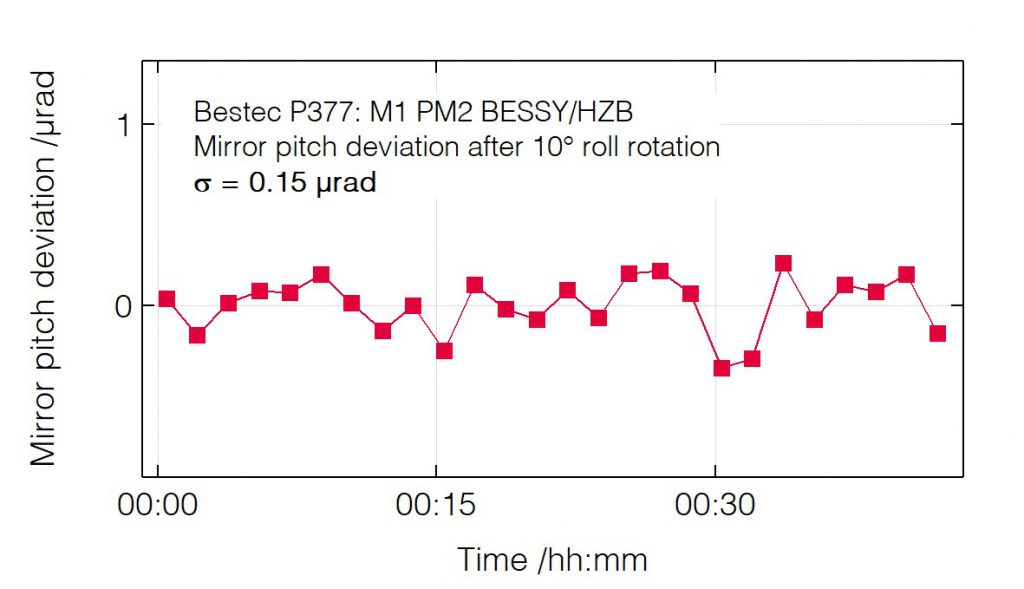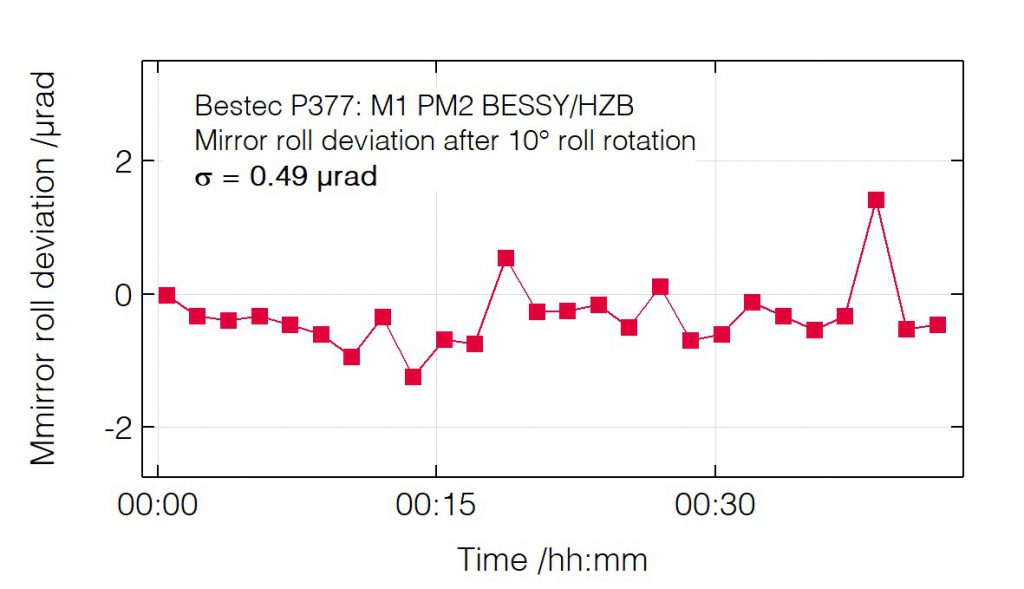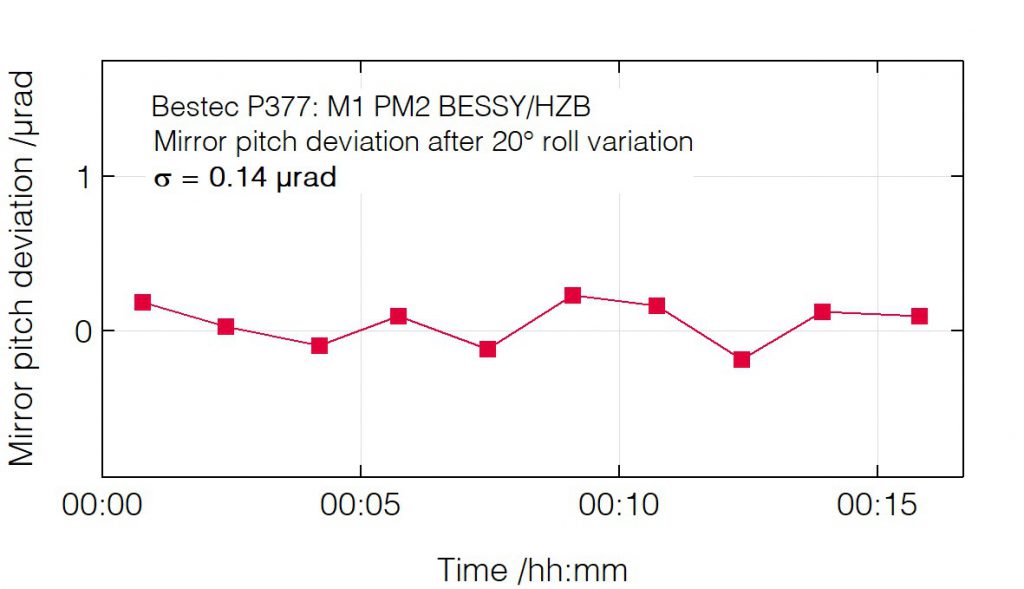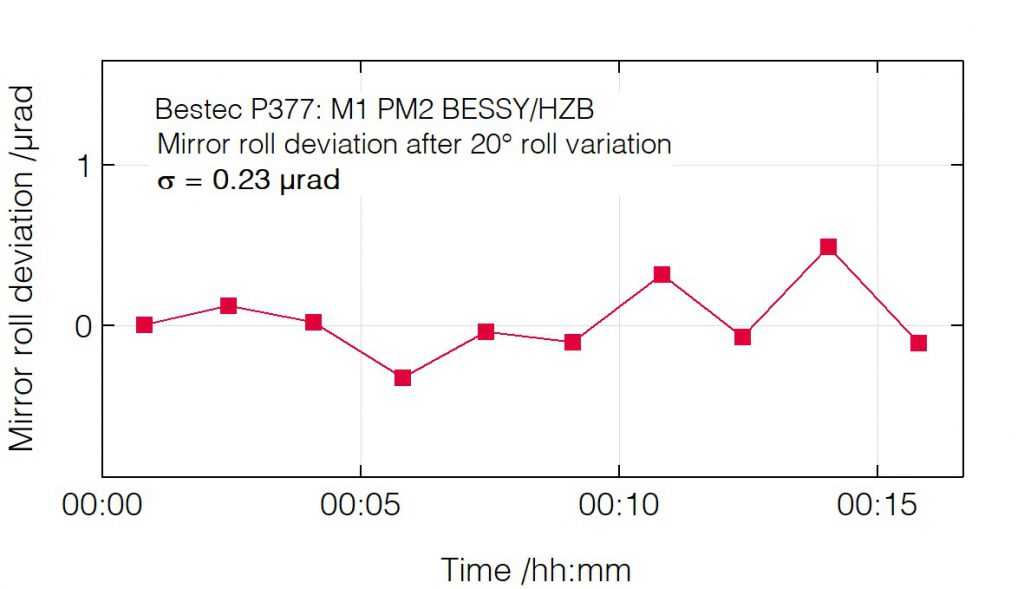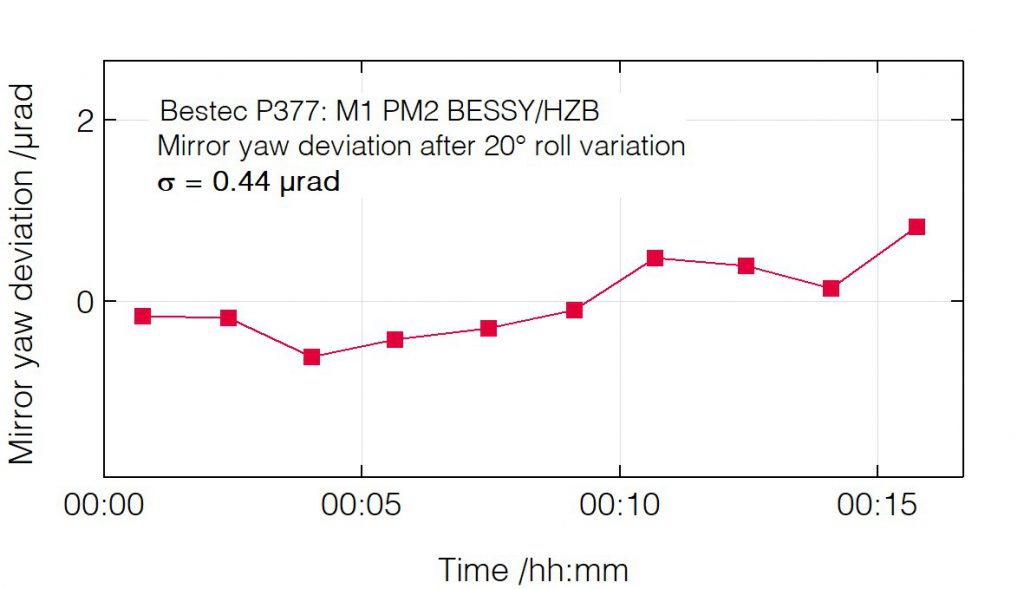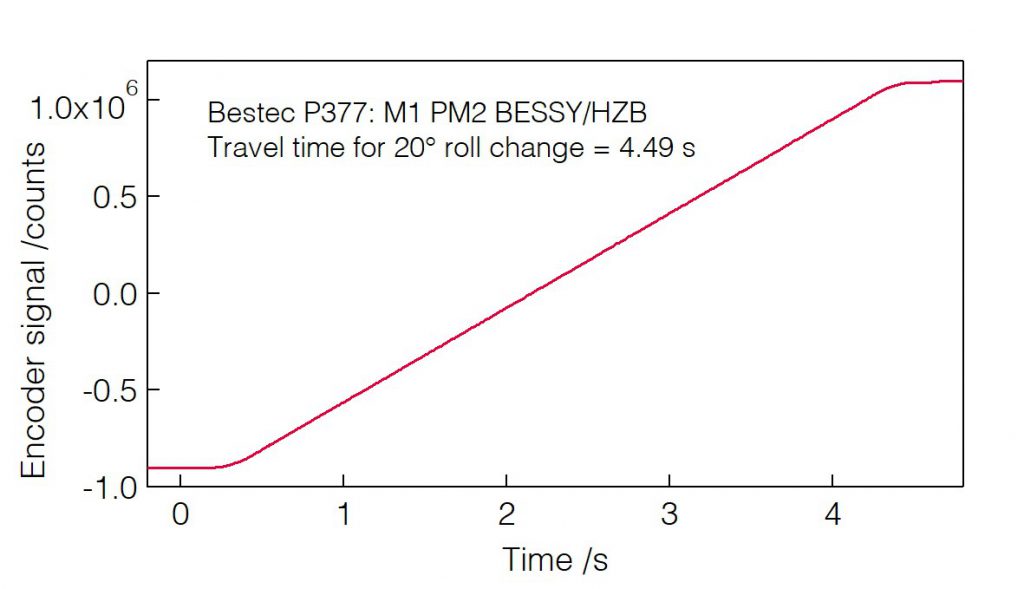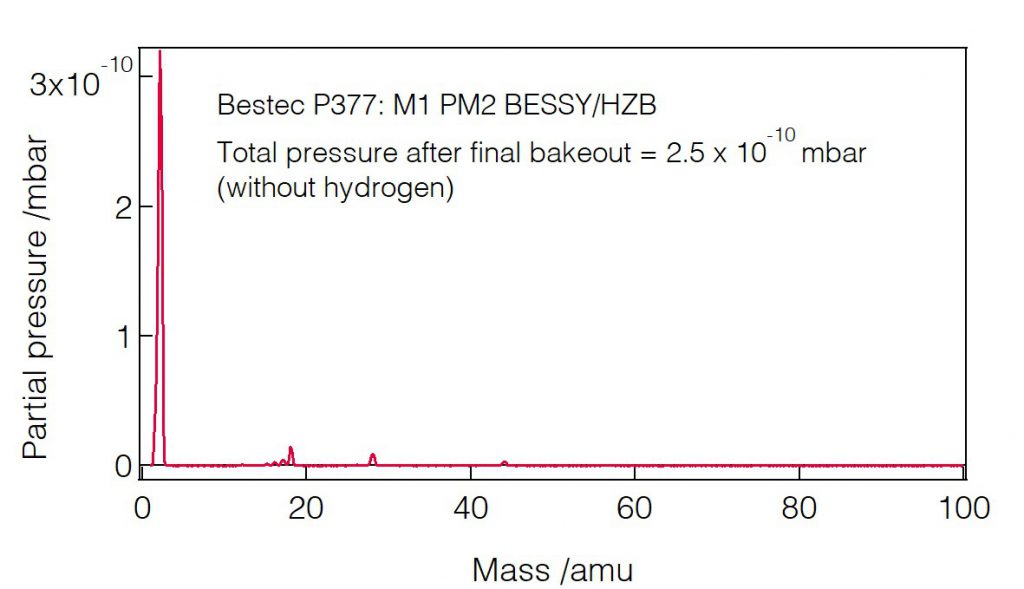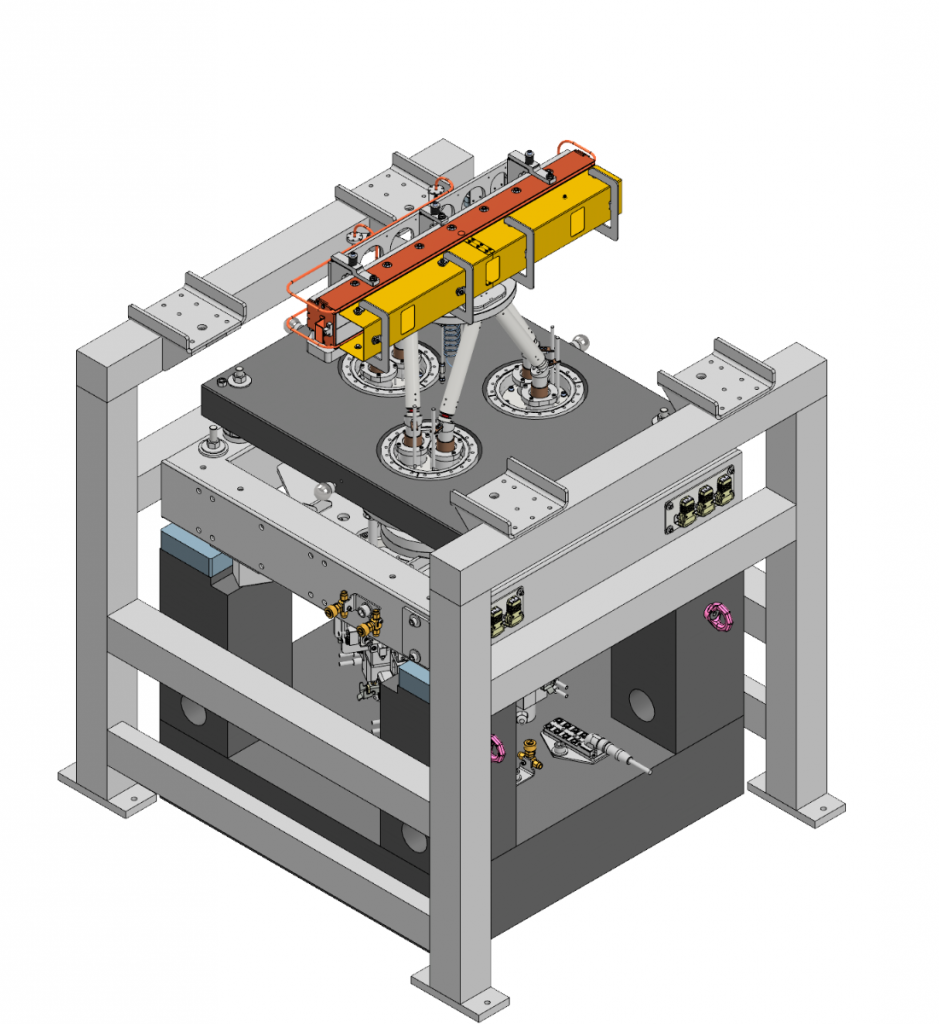
P377 – Mirror Unit PM2 BESSY
Application
Mirror unit (M1) for soft X-ray synchrotron radiation
Year of delivery
2013
Installation site
PM2 beamline at BESSY, Helmholtz-Zentrum Berlin, Germany
For this collimating mirror unit we developed the constant-strut-length hexapod mechanism, which allows for a motorized movement in six degrees of freedom. Exceptionally large ranges can be covered with very high speed and positioning repeatability. The large rotational roll range travelled in a few seconds enables polarization switching e.g. for XMCD experiments.
Design Features
-
Constant-strut-length hexapod mechanism.
- Six degrees of freedom and selectable rotation center.
- Spectral range: 5 – 1600 eV.
- Optical elements: one deflecting toroidal mirror.
-
Large angle range.
- Temperature sensors at mirror chin guard and mirror body.
- Electrically isolated gold plated electrode at mirror surface.
-
Active water cooling of the mirror.
- Four water cooled, motorized OFHC aperture blades at the entrance flange.
- Permanently installed bakeout provisions.
- Adjustable support structure.
Performance Features
- Fast switching of the mirror roll over large ranges.
- Well-balence compromise between speed and step resolution.
- High stability and repeatability for all degrees of freedom.
- Minimized mounting induced deformations.
- High load capacity.
Outer Dimensions
Technical specifications and performance values
General
Vacuum chamber
Chamber type
cylindrical, vertical axis
Main flanges
at the top
Material
1.4404 (C < 0.02%)
Base pressure
10-10 mbar range
Optical design parameters
Beam height
1400 mm
Number of mirrors
1
Surface shape
toroidal
Mirror dimensions
760 x 80 x 80 mm3
Actuator drives for hexapod axes
Resolution (design value)
0.02 µm /motor fine step
(1/512, recommended)
0.02 µm /encoder count
Mirror mechanics
Pitch rotation
Range
± 4°
Roll rotation
Range
± 10°
Repeatability upon 10° rotation
0.15 µrad (pitch)
0.49 µrad (roll)
Repeatability upon 20° rotation
0.14 µrad (pitch)
0.23 µrad (roll)
0.44 µrad (yaw)
Switching time between
range limits
4.49 s
Yaw rotation
Range
± 4°
Translation (vertical / lateral)
Range
± 10 mm
Repeatability
< 1 µm
Aperture unit
Blades
Material
OFHC (water cooled)
Range
50 mm, 100 mm
Resolution (design value)
0.04 µm /motor fine step
(1/256, recommended)
0.05 µm /encoder count


